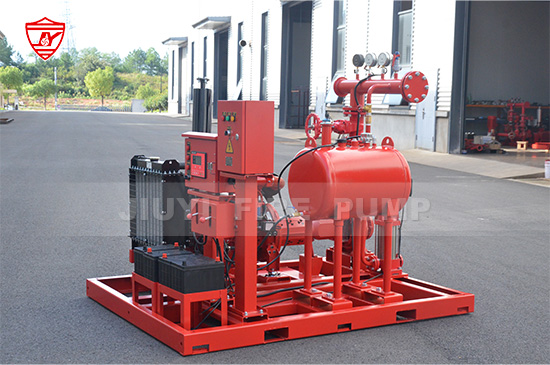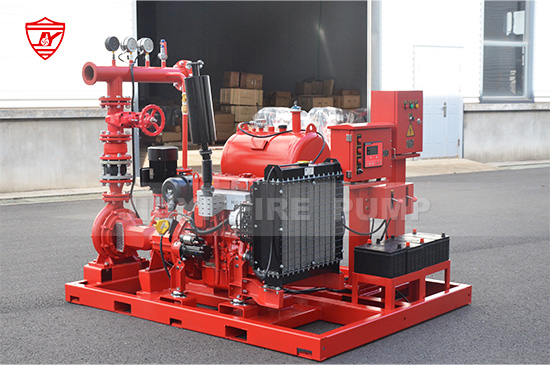Fire pump systems are critical components in any fire protection setup. They ensure that water is delivered at the right pressure to fire sprinkler systems and hydrants, safeguarding lives and property. One of the most common issues faced by fire pump operators is low pressure, which can compromise system performance and safety. Understanding the causes of low pressure and knowing how to troubleshoot it effectively is essential for maintaining reliable fire protection. This guide provides step-by-step insights for fire pump professionals, maintenance personnel, and safety managers.

Pressure in a fire pump system refers to the force with which water is delivered to the firefighting network. It is usually measured in pounds per square inch (psi) or bar. Fire pump systems are designed to meet specific pressure requirements based on the size of the building, layout of the sprinkler system, and fire safety standards such as NFPA 20. Low pressure can indicate a system malfunction, which, if not addressed promptly, can reduce firefighting efficiency.
Before attempting repairs or adjustments, it’s important to identify potential causes of low pressure:
Pump Mechanical Issues
Wear and tear on pump components, such as impellers, bearings, or seals, can reduce efficiency and pressure output. Corrosion or damage can also disrupt the flow of water.
Incorrect Pump Operation
Fire pumps must operate according to their design specifications. Running a pump at an incorrect speed or with improper alignment can lead to low pressure.
Clogged Suction or Discharge Piping
Blockages in suction lines, strainer screens, or discharge piping can restrict water flow, causing a drop in pressure.
Closed or Partially Closed Valves
Valves in the pump system, if closed or partially closed, can limit water flow and reduce system pressure.
Air Entrapment
Air in the pump casing or piping can prevent the pump from generating adequate pressure. This often occurs during startup or after maintenance work.
Inadequate Water Supply
If the pump is drawing water from a tank or reservoir with insufficient volume or head, it may not reach the required pressure.
Control System Malfunction
Issues with pressure sensors, controllers, or automatic start mechanisms can affect pump operation and pressure regulation.
Effective troubleshooting requires a systematic approach. Follow these steps to diagnose and resolve low-pressure issues:
Use gauges to measure suction and discharge pressures.
Compare readings to system design specifications.
Check for discrepancies that indicate a problem within the pump or piping.
Examine the pump impeller for wear, corrosion, or damage.
Check bearings and seals for signs of leakage or degradation.
Ensure the pump shaft is properly aligned with the driver (electric motor or diesel engine).
Confirm that all suction and discharge valves are fully open.
Inspect strainer screens, filters, and suction piping for blockages.
Remove debris or buildup that may impede water flow.
Ensure the water source provides sufficient volume and pressure.
Verify that tanks, reservoirs, or suction mains are adequately filled.
Check for closed or partially closed isolation valves upstream of the pump.
Listen for unusual noises such as cavitation or gurgling.
Bleed air from the pump casing or piping if necessary.
Ensure proper priming of the pump before startup.
Inspect pressure switches, controllers, and sensors for proper operation.
Test automatic start and stop functions.
Check wiring, settings, and any error codes on digital controllers.
Start the pump and observe pressure readings.
Check for stability and consistency in discharge pressure.
Record any fluctuations that may indicate intermittent issues.
Follow the manufacturer’s maintenance schedule for inspections and part replacement.
Lubricate bearings, tighten connections, and clean strainers regularly.
Keep records of maintenance activities and any repairs performed.
Preventive measures can reduce the risk of low-pressure problems and extend the life of your fire pump system:
Regular Testing: Conduct weekly or monthly performance tests according to NFPA 25 standards.
Proper Installation: Ensure pumps and piping are installed according to manufacturer specifications and fire safety codes.
Monitor Water Supply: Maintain adequate water levels in tanks and ensure suction lines remain clear.
Routine Maintenance: Replace worn components before they fail.
Staff Training: Ensure operators are trained to recognize early signs of low pressure and know basic troubleshooting procedures.
While many issues can be resolved on-site by trained personnel, some situations require professional intervention:
Severe mechanical damage to pump components.
Persistent low pressure despite following troubleshooting steps.
Electrical or control system failures beyond basic inspection.
Situations involving safety-critical systems in large buildings or industrial facilities.
Engaging qualified fire pump service technicians ensures compliance with NFPA standards and maintains the reliability of your fire protection system.

Low pressure in fire pump systems can compromise fire safety and should never be ignored. By understanding common causes, following a systematic troubleshooting process, and maintaining a proactive maintenance routine, facility managers and fire safety professionals can ensure their fire pump systems perform reliably when needed most. Timely intervention, regular inspections, and adherence to fire protection standards are key to maintaining safe and effective fire suppression.
This article is roughly 1,500 words and optimized for SEO. It provides practical guidance for your audience in the fire safety field, emphasizing both troubleshooting steps and preventive measures.